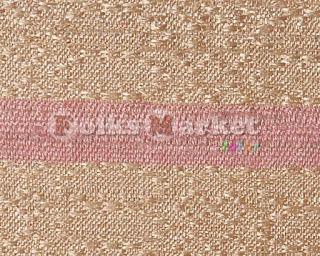Good Eve folks! Today we would like to touch the silk fabric briefly. Silk often rhyme with elegance, softness and handloom fabric. Lets see how it is evolved and a cursory look at its properties.
The Chinese legend says that silk was first reeled
by the Empress Hsi Ling She around 2700 BC. Archaeological evidence suggests
that silk is used since 5000 BC, that is more than 7000 years from now!
 |
| www.folksmarket.com |
Empress Hsi Ling She was sipping tea under the
mulberry tree when she discovered the silk filaments from the cocoon. So
fascinated was she that she started reeling silk all alone. She learnt to spin
the silk and made some luxurious fabric out of it.
Besides China, traces of silk has also been traced
in Indus Valley Civilization of India, Egyptian mummies, Middle East, Europe
and North Africa. The discovery at Harappa and Chanhu-daro suggest that ancient
people knew Sericulture (art of silk cultivation), employing wild silk threads from local silk worms. So
much was the popularity of the silk that major trade route from Europe to Asia
is known as Silk Route
 |
| www.folksmarket.com |
Silk is a natural protein fibre coming from the silk
worm (Bombyx Mori) who fed on
mulberry leaves. The silk fibre has a triangular prism like structure that
reflects light into various angles which results into the shimmering effect of
the silk fabric.
Though silk is produced by various insects, it is
only the silk worm that has been utilized so far by the textile industry.
Though research is on way for other insects.
 |
| www.folksmarket.com |
Silk are produced normally by two kind of worms. One
that feeds on mulberry silk and other that do not feeds on mulberry silk. The
first variety is known as Mulberry Silk and the other known as Wild Silk.
Before the domestication and cultivation of mulberry silk worms, the wild silk
was widely used. The silk produced from the wild silk is of lesser grade for
variety of reasons. Important among them are quality of the silk fibre and
other is the short filament as generally the worm tears the filament and comes
out.
The mulberry leaf is fed to the caterpillar and
after 35 days of continuing feeding, the silk worm spins a cocoon of silk. The length of the silk
filament from a single cocoon could be as long as a mile (1.6 kms)!
The cocoon are boiled and filament is identified
which then is reeled into silk threads.
 |
| www.folksmarket.com |
The length of the silk filament is very important in manufacturing
a high class fabric. Generally the more the length of the filament is, the
higher is the quality. Short fibres are also spun to create low quality
threads.
Silk is a strong fibre but it deteriorates with time
and become brittle. The number of process involved, high end skill required and
feeding expensive mulberry leaves make the silk fibre a costly but worthwhile
fabric.
 |
| www.folksmarket.com |
Today silk is used in virtually all the aspect of
the textile industry. Be it apparels, fashion, curtains, wedding gowns, other
home furnishing items, silk finds it use everywhere. The expensive fabric like
Georgette, Chiffon, Velvet, Satin, all use silk as their primary raw material.
The silk fabric is prized agricultural commodity, although its contribution in
global textile industry is around 1%.
 |
| www.folksmarket.com |
India is 2nd largest producer
of silk. In India, the best of the silk fibre are obtained from Bangalore,
Assam, Murshidabad, Varanasi, Bhagalpur etc. The Bhagalpur earlier was called
as Silk City but it is now replaced by Bhoodhan Pochampally (Andhra Pradesh). Assam produce
three varieties of the silk: Eri, Muga and Mulberry. Of these three, Eri and
Muga are native to Assam and North East of India. Muga is also known as Gold
Silk as the natural muga silk will be golden in color.
The southern India has the tradition of wearing
sarees made of silk and as such we see some heavily worked upon sarees like
Kanchipuram, Dharmavaram, Pochampally, Mysore silk sarees etc.
 |
| www.folksmarket.com |
 |
| www.folksmarket.com |
Some
of the important characteristic of Silk Fibres and Fabric
·
- Silk filament is a continuous thread of 500-1500 mtrs in length
- It is stronger than cotton and linen
- Prolong exposure of sunlight can turn white silk into yellow and can also weaken the fibre
- It absorbs moisture easily making it valuable fabric for summer
- It retains heat during winter season, making it all weather fabric
- It is resilient and elastic
- Dries quickly
- Expensive due to process and raw material (mulberry leaves)

silk curtains
ReplyDeleteOrder custom silk curtains & drapes at SpiffySpools.com. Any size and style. Choose from over 1000 fabrics. Shipping is
free!
to get more -https://www.spiffyspools.com/collections/custom-silk-curtains-drapes/
Very good website, thank you.
ReplyDeleteLord Jagannath Idol In Marbel Deep Green Yellow
Order Handicrafts Product
Handicrafts Product Online